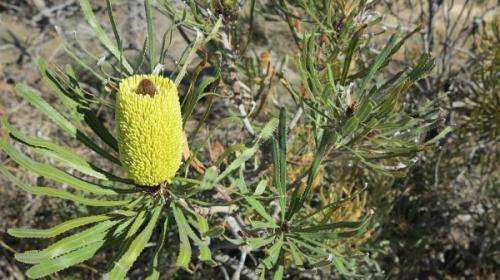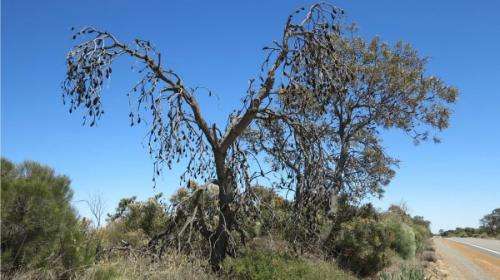Legwork needed to chronicle Banksia resilience

The Department of Parks and Wildlife (DPaW) and the University of WA (UWA) are calling on volunteer 'citizen scientists' to help determine if the range of one of WA's most well-known flora genera—the Banksia—is contracting with climate change.
The volunteers and scientists will examine six Banksia species at the northern and southern ends of a region stretching from Kalbarri to Albany.
They will document Banksia occurrences at these sites and compare them to Banksia surveys conducted at the same sites between 1984 and 1986, when citizen scientists amassed 25,000 Banksia records as part of a project named Banksia Atlas.
UWA honours student Sarah Randell says the South West botanical region, which stretches from Shark Bay to the south coast, has become warmer and significantly drier since the 1970s, with a 14 per cent decrease in early winter rainfall.
"Modelling studies have suggested that the ranges of Banksia species are likely to contract southwards and westwards as climate change proceeds in the South West," she says.
"An important question is: are these predicted range shifts already occurring as a result of the climate change that the region has already experienced?"
Ms Randell says Banksia play critically important ecological roles in South West ecosystems: they dominate many vegetation types and provide shelter and habitat for a wide range of native plants and animals as well as nectar and pollen for many native birds, mammals and insects.

Her project will focus on the candle banksia (B. attenuata), bull banksia (B.grandis), swamp banksia (B.littoralis), firewood banksia (B. menziesii), acorn banksia (B. prionotes) and the river banksia (B. seminuda)—species selected because they are common, widespread and easily recognisable.
"If climate change since the time of the Banksia Atlas surveys has caused these species to contract southwards, there should be more cases of populations becoming locally extinct in the north than in the south," Ms Randell says.
"In order for the project to be statistically valid, however, at least 50 of the Banksia Atlas sites must be revisited for each species [25 at each end] to see if the target species is still there.
"This adds up to a large number of sites that need to be visited—300 in total—and I need help!"
Provided by Science Network WA





















